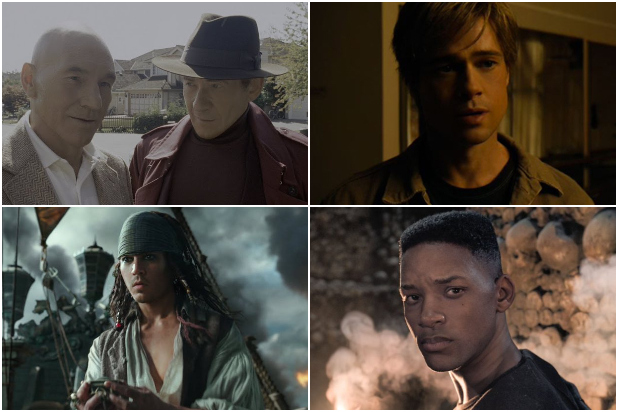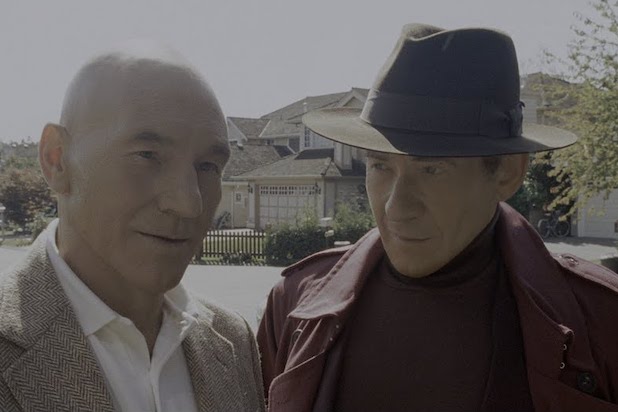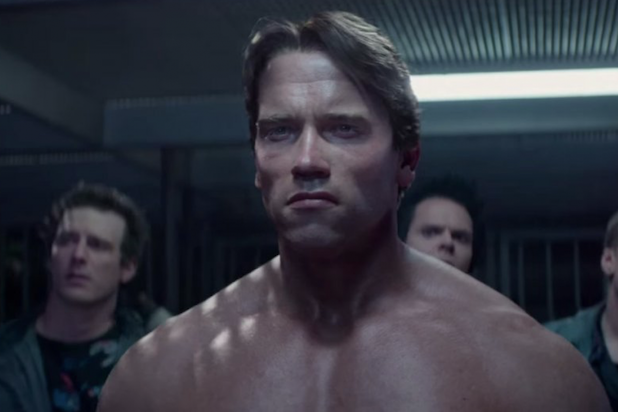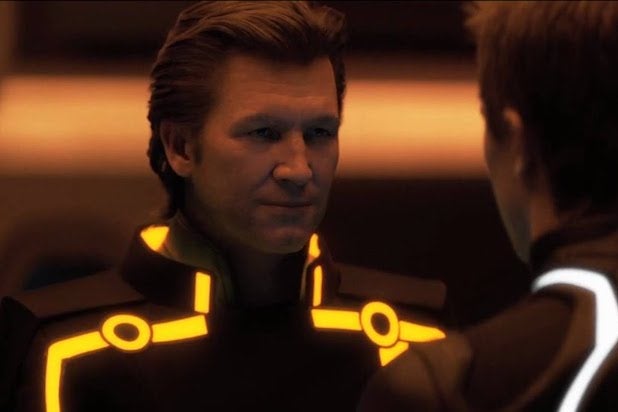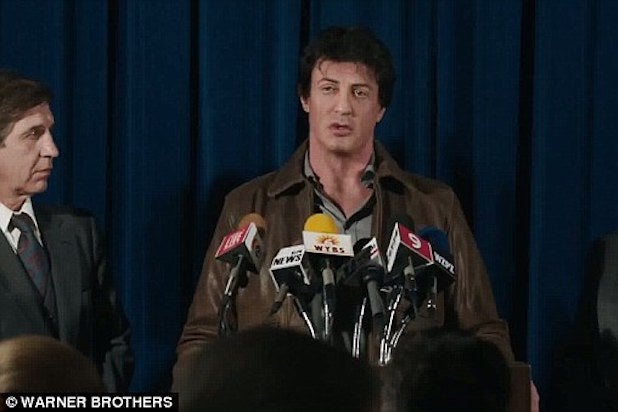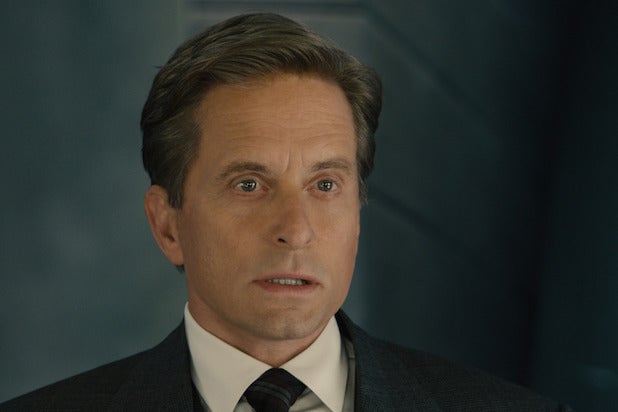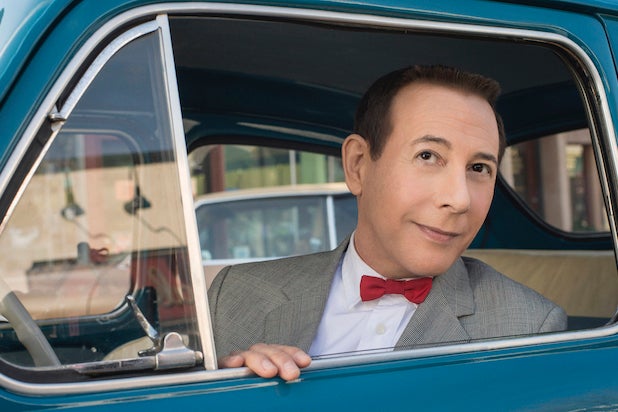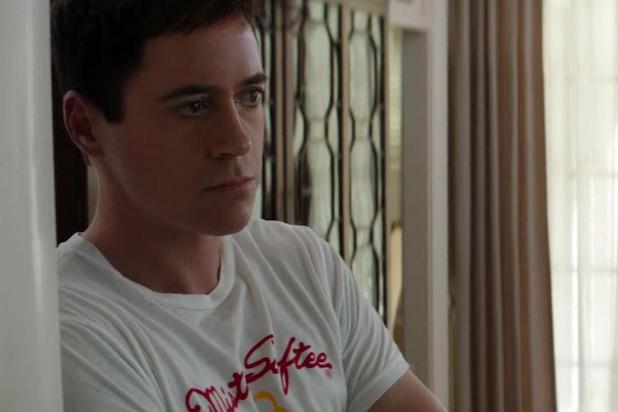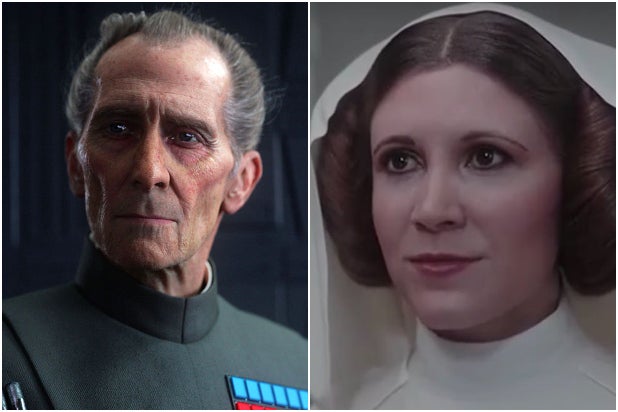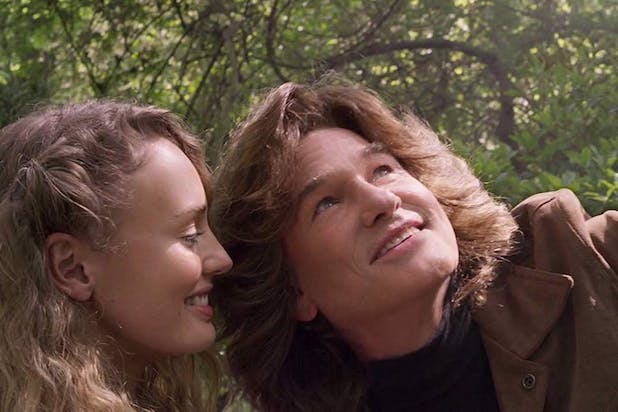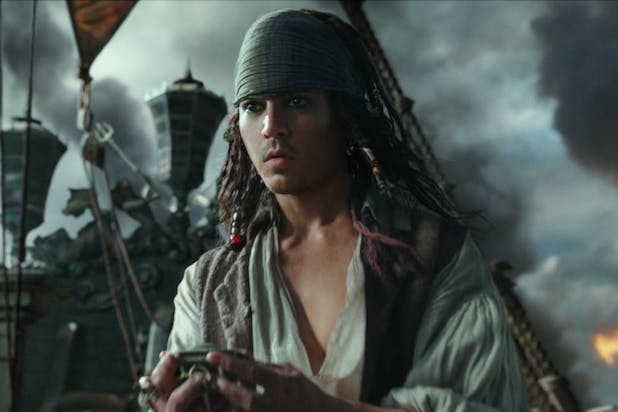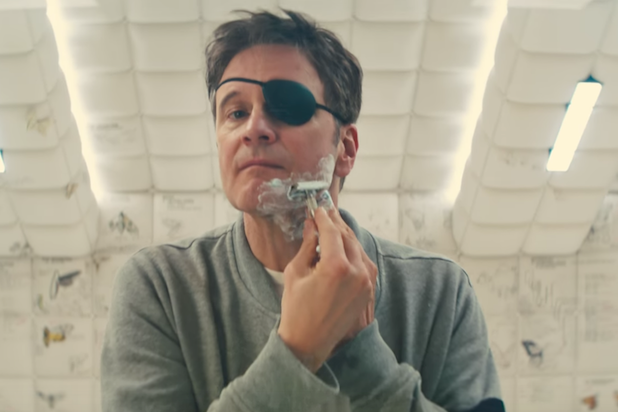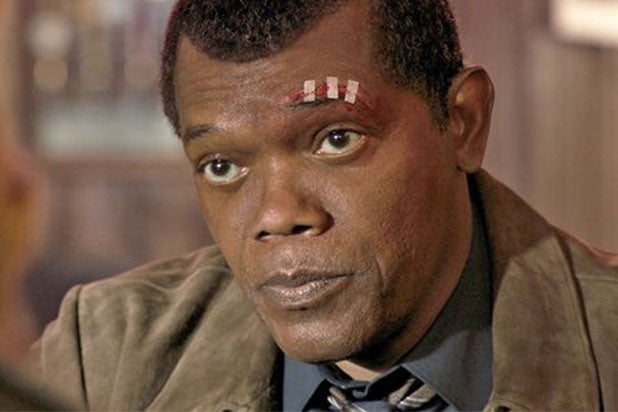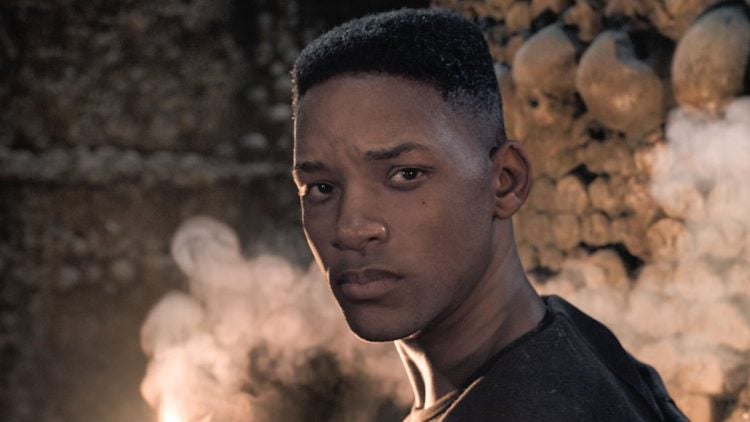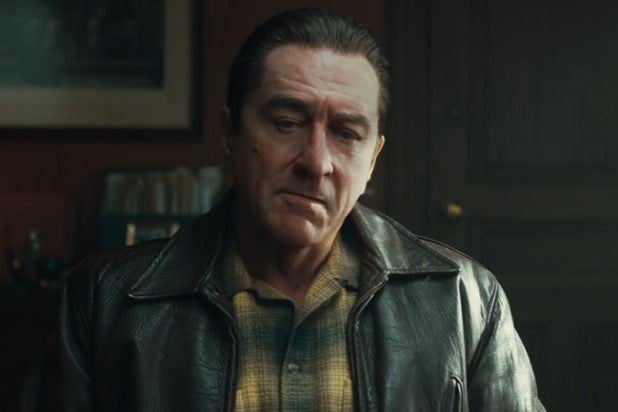“My hope and my optimistic point of view is that ultimately people will always need that human element,” the actress says
In her new action-thriller, “Gemini Man,” Mary Elizabeth Winstead stars alongside two Will Smiths; one of them just happens to be a fully CGI character built from the ground up.
The technologies used in “Gemini Man” — by Oscar-winning visual effects company Weta Digital –have posed a bit of an existential kerfuffle in the industry in recent years. In 2019 alone, films including “Gemini Man,” Martin Scorcese’s “The Irishman” and Disney’s “The Lion King” include similar CGI effects, adding weight to the question: Are technologies making actors obsolete?
“It’s a legitimate fear going on that we could just be sort of not necessary for a lot of our jobs,” Winstead said ahead of the film’s Oct. 11 release during an interview at TheWrap studios in Los Angeles.
”Also: ”‘Gemini
While Winstead doesn’t come face-to-face with a CGI version of herself, she’s hopeful that the technology won’t become a threat.
“My hope and my optimistic point of view is that ultimately people will always need that human element, you know, to connect to,” she said. “As time goes on and the technology gets further and further along, everybody might follow that for a little while, but hopefully you’ll always need the real human being to keep it grounded. We really hope so in the acting community that that’ll be the case.”
Winstead will next appear in Warner Bros. comic book flick “Birds of Prey” alongside Margot Robbie, Rosie Perez and Jurnee Smollett-Bell. Winstead will play Huntress, who in the DC comics was once a mafia princess whose family was killed in a mob hit. She eventually becomes a vigilante hell-bent on taking the mob down. She described Huntress as “Another strong, interesting, really sort of quote-unquote ‘badass character’ that’s really fun to play.”
20 Actors Digitally De-Aged on Film, From Brad Pitt to Robert De Niro (Photos)
Digital de-aging– the act of making an actor look decades younger (or sometimes older) on screen by digitally smoothing out wrinkles and tightening jaw lines–is all the rage right now in the world of CGI. Why hope that a young, untested actor can be convincing as a lookalike Samuel L. Jackson when we have the real thing right here? Imagine photoshopping a picture for a magazine, but now do that over and over for every scene of a movie. It’s not a complicated process, and the technology hasn’t advanced drastically dating back to the first instance in 2006, but the VFX artists have matured to the point that filmmakers can go entire movies with a de-aged actor rather than just a few scenes. Here are just a few actors who have gone under the digital knife.
Patrick Stewart and Ian McKellen – “X-Men: The Last Stand” (2006)
The first major instance of digital de-aging came in the 2006 superhero film “X-Men: The Last Stand.” Patrick Stewart and Ian McKellen appear in flashback as their characters Charles Xavier and Magneto as they try and recruit a pre-teen Jean Grey. Greg and Colin Strause of the VFX company Lola Visual Effects used what the team called “digital skin grafting” to make the actors look younger by removing the actors’ wrinkles. Though this early example is a little plastic-y, it was enough to kick off an ethical discussion about what visual touch-ups could be done to actors and whether anyone should.
20th Century Fox
Brad Pitt – “The Curious Case of Benjamin Button” (2008)
To convincingly tell the story of a man who aged in reverse, “Benjamin Button” director David Fincher turned to a system called Contour as developed by Silicon Valley entrepreneur Steve Perlman. Contour was first used in video games to help capture the performances and gestures of human actors and apply them to virtual characters, even going as far as to graft one person’s face onto that of another human actor. So the ’90s era version of Brad Pitt seen in the film is closer to a fully digital replica of Pitt than a digitally de-aged version of him.
Paramount Pictures
Arnold Schwarzenegger – “Terminator Salvation” (2009)
Arnold Schwarzenegger is not actually in “Terminator Salvation,” even though his face is. For “Salvation,” which came out during the time that Schwarzenegger was busy being governor of California, the visual effects team used an old plaster cast used on the original “Terminator” film and digitally placed it onto a body double. Schwarzenegger however would reprise his role in 2015 for “Terminator Genisys” and battle a younger version of himself. That process also required a body double and the plaster cast as a digital scanner tracked Schwarzenegger’s facial movements as he read his lines.
Paramount Pictures
Jeff Bridges – “Tron: Legacy” (2010)
If the early iterations of de-aging technology made characters look like video game avatars, that was the point for “Tron: Legacy,” in which Jeff Bridges plays both his older self and his younger avatar in the “Tron” video game. The team at Digital Domain spent two years getting the look right for the film, utilizing elaborate facial capture technology to properly scan Bridges’s face. But the core process of de-aging would be the same as it would be done for years to come, in which Bridges would read his lines, and a body double would stand in and mimic his lines and gestures precisely. A double is used to properly mimic the lighting and shadows of a specific moment and give the artists a model on which to work, meticulously grafting the lead actor’s face onto the double’s body.
Disney
Sylvester Stallone – “Grudge Match” (2013)
Sylvester Stallone appears very briefly as a “Rocky”-era version of himself in a flashback scene in the comedy “Grudge Match,” in which a now older Stallone squares off in the ring against his old rival, played by Robert De Niro.
Warner Bros.
Orlando Bloom – “The Hobbit: The Desolation of Smaug” (2013)
Elves aren’t supposed to age, but Orlando Bloom did in the decade-plus since the original “Lord of the Rings” trilogy. So Bloom had to be digitally de-aged to resemble his younger self for the brief cameo in the “Hobbit” prequel.
New Line Cinema
Michael Douglas – “Ant-Man” (2015)
Marvel’s first dip into digital de-aging technology was officially in “Ant-Man,” when Michael Douglas appears as a young Hank Pym. But the team at Lola VFX actually tinkered with the same technique in “Captain America: The First Avenger.” In capturing the look of “Skinny Steve,” they experimented with using a body double who would mimic Chris Evans’s performance and then sub in Evans’s face. The technique worked so well on “Ant-Man” in de-aging Douglas that Marvel would use it over and over again in subsequent films.
Disney
Paul Reubens – “Pee Wee’s Big Holiday” (2016)
Shortly before Paul Reubens got de-aged to make it look as though Pee-wee Herman had never aged a day, Mashable reported in a lengthy investigation just how extensive digital touch-ups were in Hollywood, with A-listers secretly getting virtual work done in ways that no one would recognize on screen.
Netflix
Robert Downey Jr. – “Captain America: Civil War” (2016)
Marvel and Lola’s de-aging technique got more advanced yet again with “Captain America: Civil War,” making Robert Downey Jr. look like he was back in 1987 and “Less Than Zero.” You can see Tony Stark turning his head and interacting with other actors in a way that hadn’t been done before and required far more attention to detail.
Disney
Carrie Fisher and Peter Cushing – “Rogue One: A Star Wars Story” (2016)
This is where the ethics of de-aging start to get thorny. “Rogue One” actually resurrected the actor Peter Cushing for the “Star Wars” prequel, and Carrie Fisher, whose younger likeness appears at the very end of the film, died within weeks of the film’s release. Industrial Light and Magic used actor Guy Henry to stand in for Cushing and mimic his speech pattern from “A New Hope,” and they later pushed back on critics, with visual effects supervisor John Knoll saying, “We weren’t doing anything that I think Peter Cushing would’ve objected to.”
Disney
Kurt Russell – “Guardians of the Galaxy, Vol. 2” (2017)
Marvel had already done de-aging so many times that it’s easy to overlook how much work actually went into getting Kurt Russell and all of his luscious, youthful hair to look just right in the second “Guardians” film. Though if you ask Russell, he’ll tell you that they didn’t have to do too much work at all.
Disney
Johnny Depp – “Pirates of the Caribbean: Dead Men Tell No Tales” (2017)
Yes, it’s a body double for Johnny Depp, but visual effects supervisor and his Moving Picture Company said that it’s still very much Depp’s performance, and that they wouldn’t have been able to accomplish on the previous “Pirates” films what they managed with “Dead Men Tell No Tales.”
Disney
Colin Firth – “Kingsman: The Golden Circle” (2017)
Both Colin Firth and Jeff Bridges starred together in “Kingsman: The Golden Circle,” and when they realized they’d both been digitally de-aged in the past, they admitted they weren’t fans of their on-screen counterparts. Bridges said he looked like a “weird version of Bill Maher,” and Firth said even his wife didn’t recognize his younger self. “I mean, there’s plenty of evidence, photographic evidence one can compare but it didn’t remind me of my young self,” Firth told ScreenRant.
20th Century Fox
Samuel L. Jackson – “Captain Marvel” (2019)
De-aging took a massive step forward on “Captain Marvel,” moving from de-aging an actor over just a handful of scenes to de-aging Samuel L. Jackson for the duration of the entire movie. The effect has never been better or more believable, even though the technology has remained relatively the same. The difference though is that for the first time Lola VFX’s team was able to create a young Nick Fury without the aid of a body double, cutting the shooting time in half. The artists meticulously compared Jackson to how he looked in his mid-’90s era movies to see precisely how skin would hang off his face or how light would hit his cheeks.
Disney
Stan Lee – “Avengers: Endgame” (2019)
For what would be his final cameo before his death, Marvel brought Stan Lee back to his ’70s glory days for a touching time travel scene in “Avengers: Endgame.” His was one of nearly 200 shots that subtly utilize the de-aging technique across the film.
Disney
Will Smith – “Gemini Man” (2019)
Peter Jackson’s Weta Digital worked with Ang Lee in bringing two Will Smiths to the screen. And unlike the photoshopping technique that has been frequently used, the young Will Smith is a fully digital creation, closer to Gollum or Caesar from the “Planet of the Apes” movies than just a body double.
Paramount Pictures
Robert De Niro and Al Pacino – “The Irishman” (2019)
Martin Scorsese’s sprawling gangster saga about the man who claims to have killed Jimmy Hoffa depended on its massive visual effects budget to show Scorsese’s longtime collaborator Robert De Niro at not just one younger age but at four different stages of his life, young and old. They managed to do so “without helmets or tennis balls” on their faces too. Turns out De Niro has had that same grumpy expression even as a young man.
Netflix
Will Smith is the latest actor to go under the digital knife in the sci-fi “Gemini Man”
Digital de-aging– the act of making an actor look decades younger (or sometimes older) on screen by digitally smoothing out wrinkles and tightening jaw lines–is all the rage right now in the world of CGI. Why hope that a young, untested actor can be convincing as a lookalike Samuel L. Jackson when we have the real thing right here? Imagine photoshopping a picture for a magazine, but now do that over and over for every scene of a movie. It’s not a complicated process, and the technology hasn’t advanced drastically dating back to the first instance in 2006, but the VFX artists have matured to the point that filmmakers can go entire movies with a de-aged actor rather than just a few scenes. Here are just a few actors who have gone under the digital knife.
Source: Read Full Article

